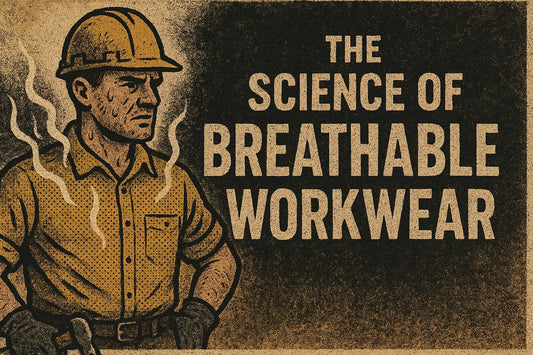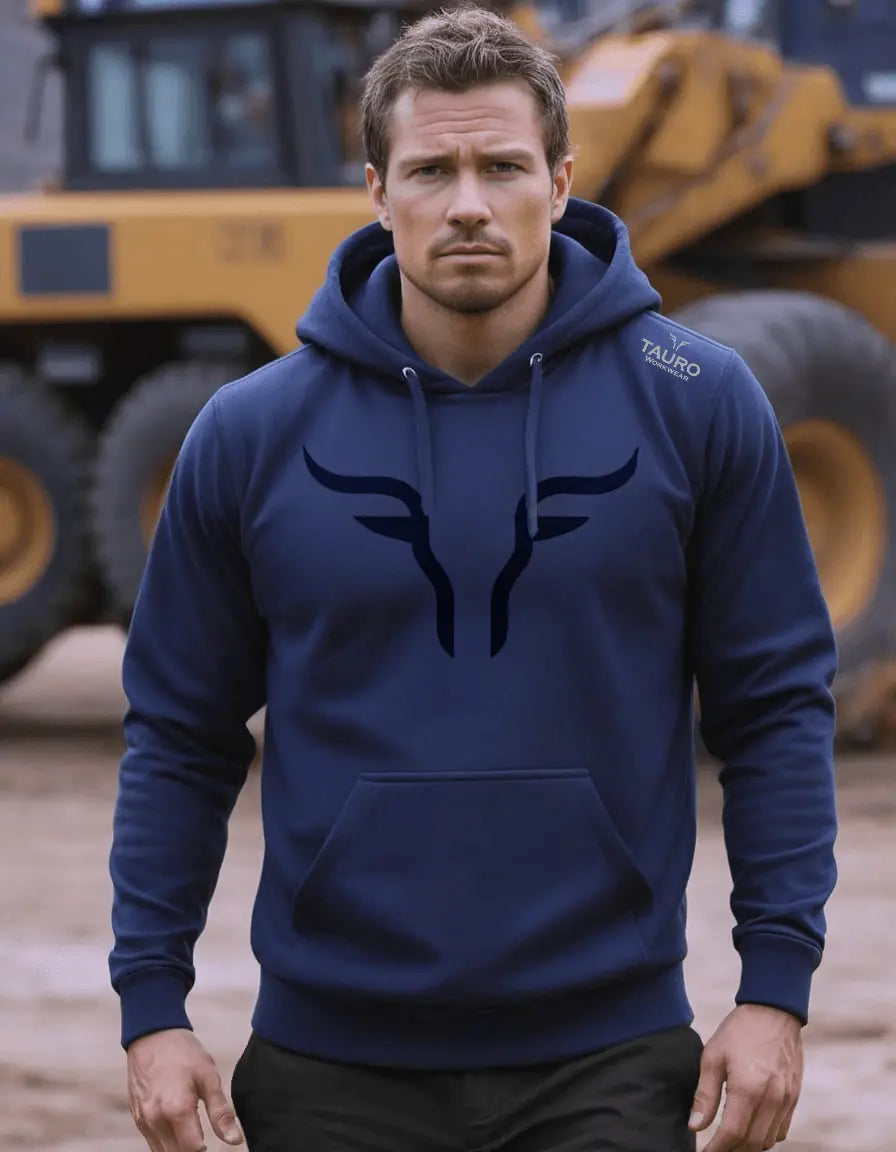
What Every Tradesperson Needs: Tool Insurance, PPE and Tough Workwear
The construction industry has evolved dramatically over the past decade. Modern tradespeople face unique challenges that require smart solutions – from protecting valuable tools to ensuring personal safety while maintaining professional appearance on site. Today's skilled workers demand more than just basic protection; they need comprehensive coverage that extends to their equipment, their bodies, and their professional image.
For young tradesmen entering the industry, understanding these essential protections isn't just about compliance – it's about building a sustainable career. The right combination of tool insurance, personal protective equipment (PPE), and quality workwear can mean the difference between thriving in your trade and struggling with unexpected setbacks.
The Evolution of Trade Protection
Research from the Health and Safety Executive shows that construction remains one of the UK's most hazardous industries, with 45 fatal injuries recorded in 2022-23. However, the nature of risks has changed. Modern construction sites are safer than ever, but the financial risks to individual tradespeople have increased significantly.
The average carpenter's tool collection is now worth over £3,000, according to Construction News research. This represents a substantial investment that many tradespeople underestimate when considering their protection needs. Meanwhile, the expectation for professional appearance has risen, with clients increasingly viewing workwear quality as a reflection of craftsmanship standards.
Tool Insurance: Your First Line of Financial Defence
Tool theft affects 1 in 4 construction workers annually, costing the industry over £80 million according to industry studies. This staggering figure doesn't account for the additional costs of work delays, replacement time, and lost productivity. For independent tradespeople, a single theft incident can devastate cash flow and derail project timelines.
Understanding Coverage Options
Tool insurance isn't a one-size-fits-all solution. Coverage varies significantly based on your trade, work patterns, and tool values. Basic policies typically cover theft from locked vehicles or secure storage, while comprehensive coverage extends to accidental damage, breakdown, and even temporary replacement tools.
Many tradespeople assume their employer's insurance covers personal tools. This is rarely the case. Employer liability insurance typically covers company-owned equipment but leaves personal tool collections vulnerable. Even when working as a subcontractor, your tools remain your responsibility.
| Coverage Type | What's Included | Typical Cost | Best For |
|---|---|---|---|
| Basic Tool Insurance | Theft from locked premises/vehicles | £150-300/year | Employed tradespeople |
| Comprehensive Cover | Theft, damage, breakdown, replacement | £300-600/year | Self-employed professionals |
| All-Risks Policy | Worldwide cover, accidental damage | £500-1000/year | Specialist contractors |
Making Claims Work for You
The key to successful tool insurance lies in proper documentation. Professional tradespeople maintain detailed inventories with serial numbers, purchase receipts, and photographs. This documentation proves invaluable during claims processing and can significantly reduce settlement times.
Modern insurance providers offer digital platforms for inventory management, making it easier to track and update tool collections. Some policies include automatic coverage increases for new purchases, eliminating the need for constant policy updates.
Personal Protective Equipment: Beyond Basic Compliance
PPE requirements have evolved beyond simple hard hats and safety boots. Modern construction sites demand sophisticated protection systems that address multiple hazards simultaneously. The HSE's construction health guidance emphasises that PPE selection should match specific job requirements, not just minimum standards.
Essential PPE Categories
Head protection has advanced significantly from basic hard hats. Modern safety helmets incorporate ventilation systems, integrated lighting, and even communication equipment. For tradespeople working in confined spaces or complex environments, these features enhance both safety and productivity.
Eye protection varies dramatically based on trade requirements. Welders need specialised filters, while carpenters require impact-resistant lenses with side protection. The key is matching protection levels to actual hazards rather than adopting a generic approach.
Respiratory protection deserves special attention given the long-term health implications of construction dust exposure. The HSE reports that construction workers are 2.5 times more likely to die from lung cancer than the general population, largely due to workplace exposure to silica dust and other airborne hazards.
The Cost of Cutting Corners
Cheap PPE often proves expensive in the long run. Substandard equipment fails when needed most, potentially leading to serious injuries and significant legal liability. More importantly, uncomfortable or poorly designed PPE encourages non-compliance, creating dangerous workplace habits.
Quality PPE manufacturers invest heavily in research and development, creating products that balance protection with comfort and functionality. This investment pays dividends in terms of user compliance and overall safety outcomes.
Modern Workwear: Function Meets Professional Image
The construction industry's image has transformed dramatically. Today's skilled tradespeople are knowledge workers who happen to work with their hands. This shift demands workwear that reflects professional competence while delivering practical functionality.
Traditional workwear often sacrificed appearance for durability, resulting in bulky, unflattering garments that reinforced outdated stereotypes. Modern workwear addresses these concerns through innovative design and advanced materials that provide superior protection without compromising professional appearance.
The Slim Fit Revolution
Slim fit workwear represents more than just a fashion trend. Research from the International Journal of Industrial Ergonomics demonstrates that well-fitted clothing reduces fatigue, improves mobility, and enhances job satisfaction among manual workers.
Young tradesmen particularly benefit from slim fit options. Having grown up with more fitted casual clothing, they find traditional workwear restrictive and unprofessional. Slim fit work trousers address these concerns by providing a contemporary silhouette without sacrificing durability or functionality.
The challenge for workwear manufacturers lies in balancing fit with practical requirements. Work trousers must accommodate tool belts, knee pads, and frequent movement while maintaining a professional appearance. Advanced pattern-making techniques and stretch fabrics make this possible.
Key Insight: Slim fit doesn't mean tight fit. Quality slim fit workwear uses strategic stretch panels and ergonomic design to provide freedom of movement while maintaining a streamlined appearance.
Material Innovation in Workwear
Modern workwear fabrics incorporate technologies borrowed from athletic wear and outdoor gear. Moisture-wicking properties keep workers comfortable during physically demanding tasks, while stretch materials provide flexibility without fabric degradation.
Durability remains paramount, but brands now achieve this through fabric engineering rather than simply using heavier materials. Ripstop weaves, reinforced stress points, and abrasion-resistant treatments extend garment life while maintaining comfort.
Some workwear manufacturers have embraced challenger brand approaches, focusing on specific user needs rather than trying to serve every possible application. This specialisation allows for more targeted product development and superior performance in specific trade applications.
The Business Case for Quality Workwear
Professional appearance directly impacts earning potential for tradespeople. Studies from the Journal of Labor Economics show that well-dressed workers command higher wages and receive more opportunities for advancement, even in manual trades.
Quality workwear also reduces replacement costs. While premium garments require higher initial investment, their extended durability and better performance justify the expense. Professional tradespeople typically replace quality workwear annually versus quarterly for budget alternatives.
Workwear Trousers: The Foundation of Professional Appearance
Workwear trousers receive the most wear and tear of any garment, making quality selection crucial. Modern options balance durability with comfort and appearance, addressing the specific needs of different trades.
Carpenters require extensive pocket systems and knee pad compatibility. Electricians need flame-resistant materials and clean professional appearance. Plumbers demand water-resistant treatments and flexibility for confined space work. The best workwear trousers address these specific requirements while maintaining professional standards.
Contemporary designs incorporate features like articulated knees, gusseted crotches, and strategically placed stretch panels. These details enhance comfort and mobility while maintaining the structured appearance that clients expect from professional tradespeople.
Selecting the Right Protection Package
Effective trade protection requires integrated thinking. Tool insurance, PPE, and workwear work together to create comprehensive coverage that addresses financial, safety, and professional risks simultaneously.
The selection process should begin with risk assessment. What tools do you rely on most? Which PPE requirements are mandatory for your typical work environments? What image do you want to project to clients and colleagues?
Budget Considerations
Protection costs should be viewed as business investments rather than expenses. The annual cost of comprehensive tool insurance typically equals 5-10% of tool value – a small price for complete peace of mind. Quality PPE and workwear represent similar proportional investments that pay dividends in safety, comfort, and professional image.
Many tradespeople underestimate the tax advantages of protection expenses. Tool insurance premiums, PPE purchases, and workwear costs are typically tax-deductible business expenses that reduce overall investment costs.
Maintenance and Replacement Planning
Effective protection requires ongoing maintenance and timely replacement. PPE manufacturers specify replacement intervals based on usage patterns and exposure levels. Workwear should be replaced when wear begins to compromise professional appearance or functionality.
Smart tradespeople maintain replacement schedules that prevent emergency purchases. Planned replacement allows for better product selection and often results in cost savings through bulk purchasing or seasonal sales.
Industry Trends and Future Considerations
The construction industry continues evolving rapidly, with new technologies and changing client expectations driving demand for enhanced protection solutions. Smart PPE incorporating sensors and communication systems is becoming increasingly common on major projects.
Workwear brands are responding to sustainability concerns through recycling programs and eco-friendly materials. These initiatives appeal to environmentally conscious tradespeople while maintaining performance standards.
The rise of specialist contractors and the gig economy has increased demand for flexible insurance solutions. Modern tool insurance policies accommodate varying work patterns and client requirements that traditional coverage couldn't address.
Technology Integration
Digital platforms are transforming how tradespeople manage their protection needs. Mobile apps allow real-time inventory updates, instant claims reporting, and direct communication with insurance providers. These tools particularly appeal to younger tradespeople who expect seamless digital experiences.
Wearable technology is beginning to influence workwear design. Garments with integrated sensors can monitor physical strain, environmental conditions, and safety compliance. While still emerging, these technologies promise to revolutionise workplace safety and performance monitoring.
Building Your Protection Strategy
Creating an effective protection strategy requires careful planning and regular review. Start by cataloguing your current tools, assessing your PPE needs, and evaluating your professional image requirements.
Research insurance providers who specialise in trade coverage rather than general policies. Specialist insurers better understand trade-specific risks and often provide more competitive rates and faster claims processing.
When selecting workwear, prioritise quality over price. The best value comes from garments that combine durability, comfort, and professional appearance. Consider your specific trade requirements alongside general functionality needs.
The Role of Challenger Brands
Challenger brands in the workwear industry often provide superior value by focusing on specific user needs rather than trying to serve every possible application. These companies typically offer more innovative designs, better customer service, and competitive pricing.
Tauro Workwear represents this challenger approach, developing products specifically for modern tradespeople who demand both functionality and professional appearance. Their focus on slim fit solutions addresses the needs of young tradesmen who want workwear that reflects their professional competence.
The workwear trousers collection demonstrates how challenger brands can deliver superior value through focused product development and direct customer engagement.
Conclusion: Investing in Your Professional Future
The modern construction industry demands comprehensive protection that extends beyond basic safety requirements. Tool insurance, quality PPE, and professional workwear form the foundation of a successful trade career.
These investments pay dividends in multiple ways: reduced financial risk, enhanced safety, improved professional image, and increased earning potential. For young tradesmen building their careers, comprehensive protection isn't optional – it's essential for long-term success.
The key lies in selecting solutions that work together to address your specific needs. Quality doesn't always mean expensive, but it does mean choosing products and services from providers who understand your trade and share your commitment to professional excellence.
As the industry continues evolving, tradespeople who invest in comprehensive protection will find themselves better positioned to take advantage of new opportunities and navigate changing market conditions. The question isn't whether you can afford these protections – it's whether you can afford to work without them.




